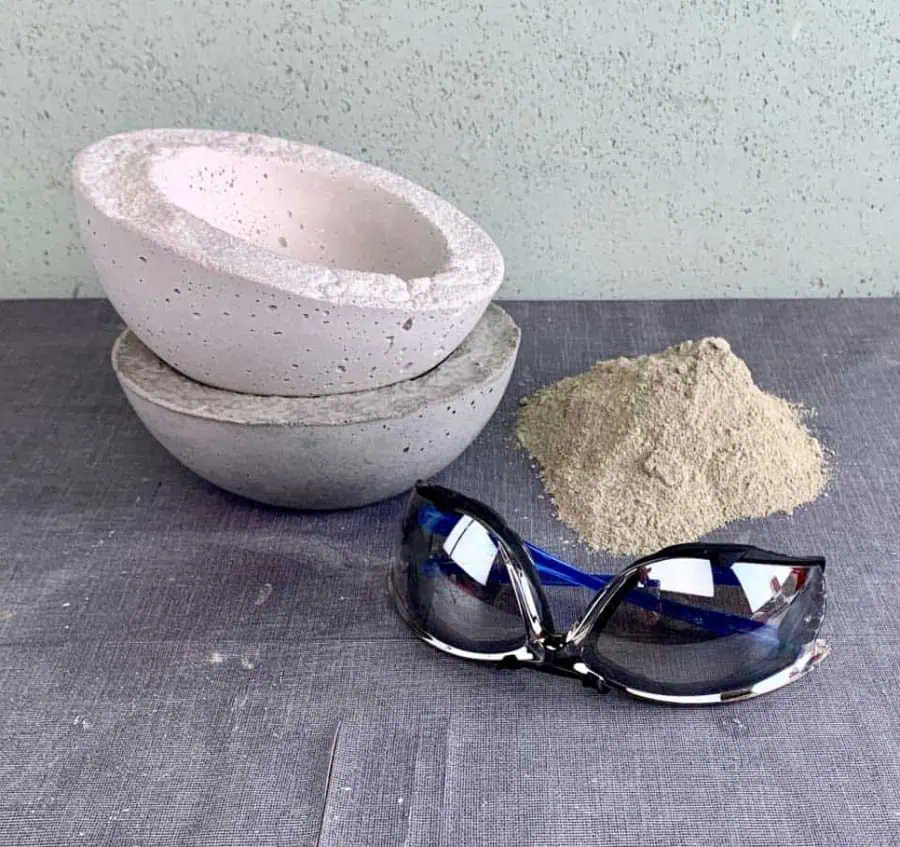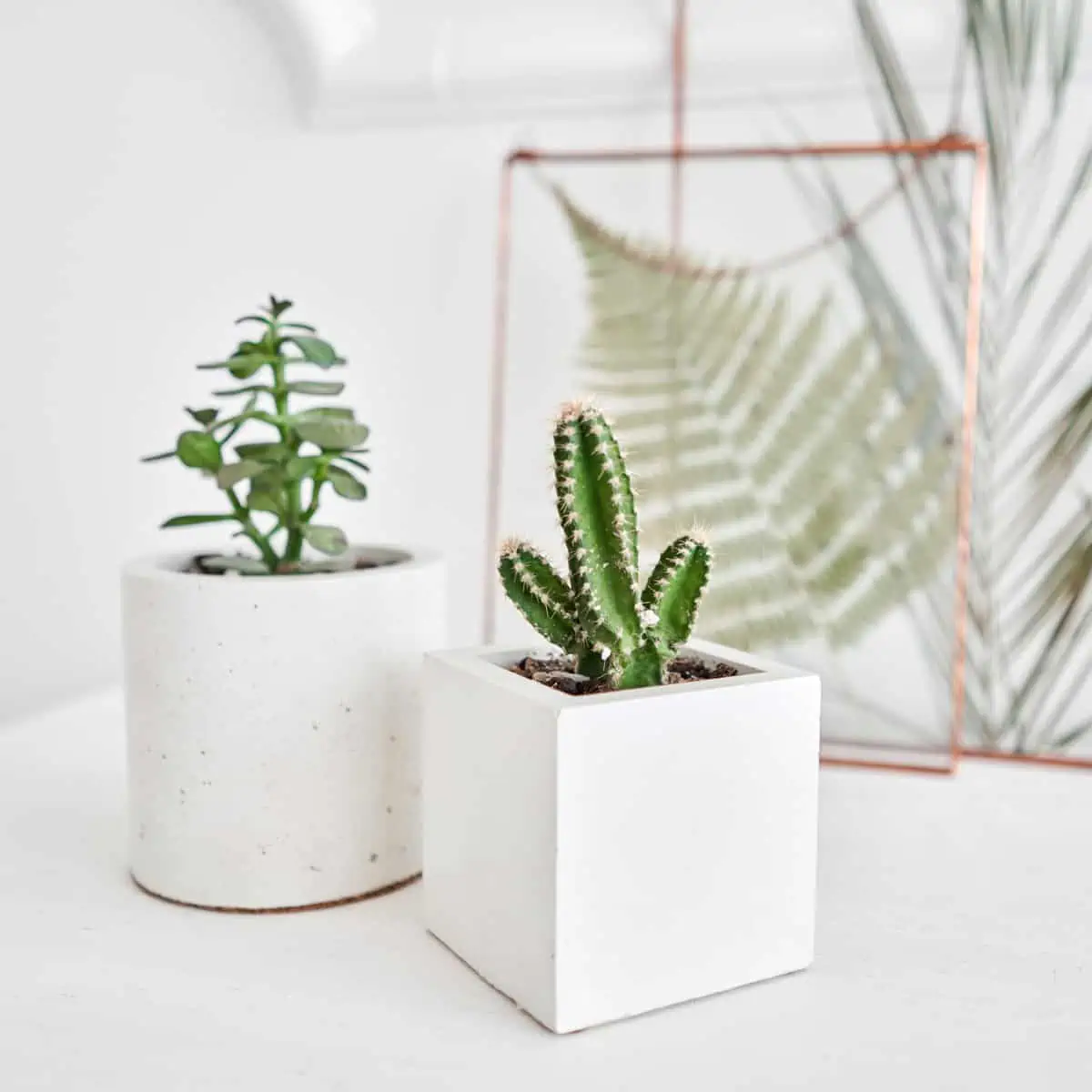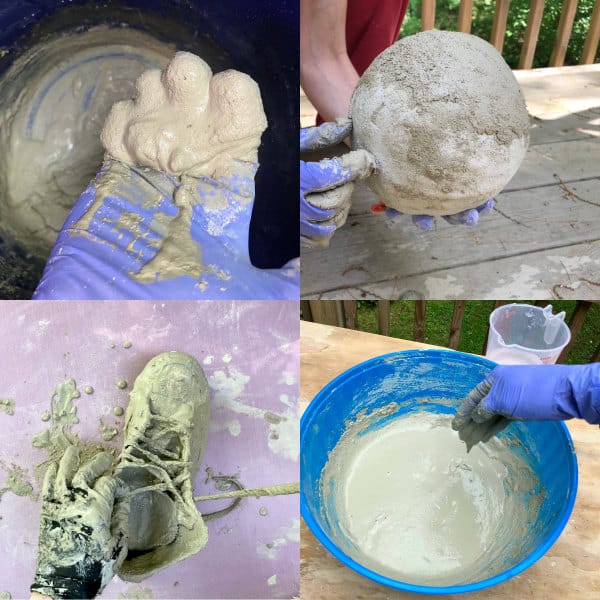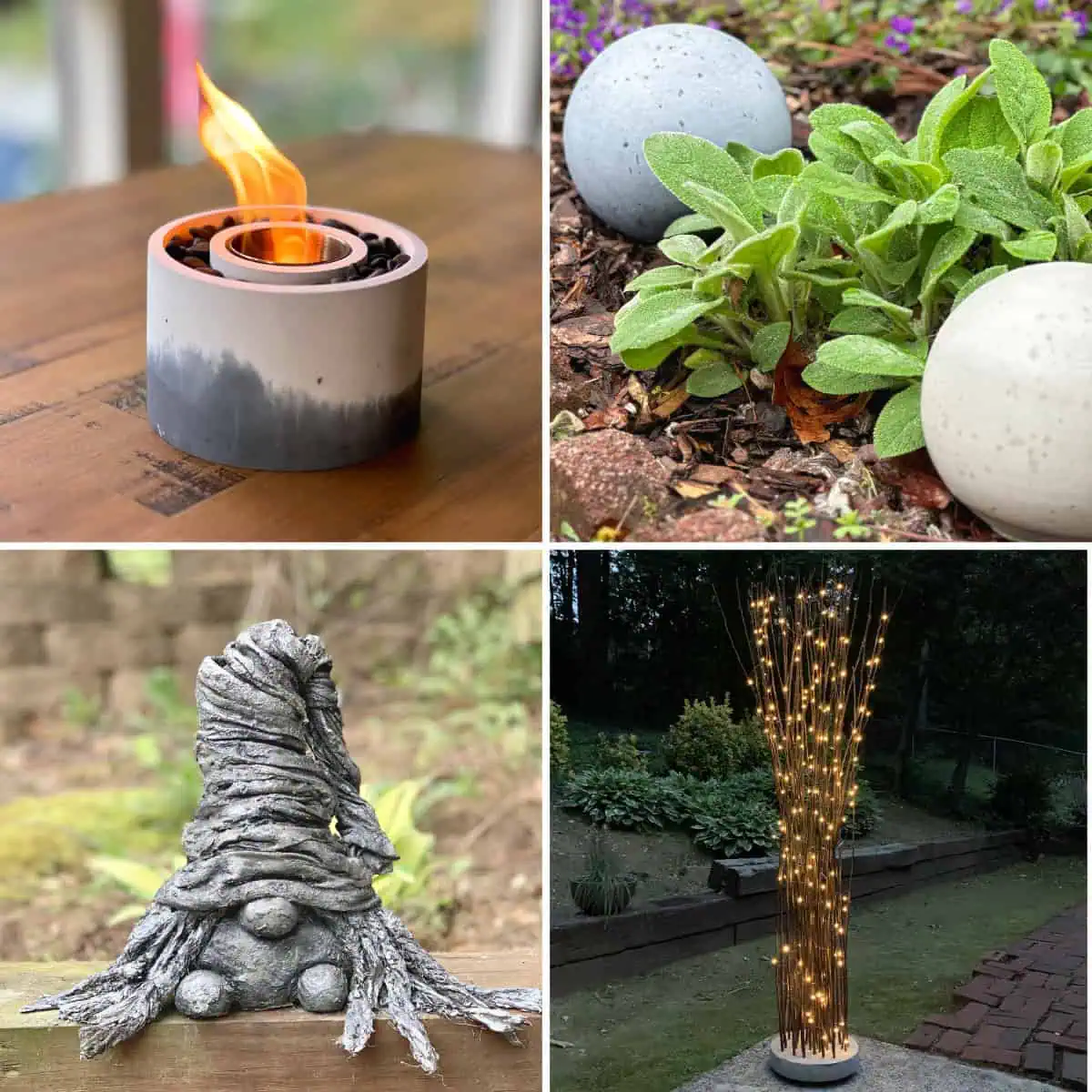Is Concrete Safe To Work With (For Concrete Crafts)
There are several safety concerns with concrete for crafts. But when you take extra precautions, concrete is safe to work with.
There are health concerns when making concrete crafts that you should be aware of and precautions to take for handling concrete safely.
Making concrete crafts is a blast and can be a life-long hobby or career, but concrete needs to be handled safely.

How To Work With Concrete Safely
Concrete and cement mixes contain materials that are caustic, and there are measures you should take to keep yourself protected.
Mixing Concrete Safely

Some of the links on this page have been provided as a convenience for finding materials. These links may also be affiliate links. As an Amazon Associate I earn from qualifying purchases, at no extra cost to you.
I only recommend products I’ve used and loved, unless otherwise stated. Click here to read my full disclosure policy.
How dangerous is wet concrete mix?
Concrete is dangerous during mixing because once water is added, the water reacts with the chemicals in concrete (like lime) which raises the pH above 12.
This very high pH can burn your skin through corrosion if the wet mix comes into contact with it.
Some of the chemicals don’t necessarily cause burns but can cause a dermatological reaction causing your skin to turn red, peel and/or crack.
How dangerous is concrete dust?
Dry concrete mix is dangerous because it has chemicals that are very abrasive and can cause damage to your lungs and eyes.
Mixing concrete causes the dry mix to rise into the air resulting in a large amount of dust.
Without protection, this dust can enter your eyes, nose and mouth.
If it gets into your eyes, it suddenly becomes a wet mix from the moisture in your eyes and can burn your eyes.
Another big safety concern with concrete is that it contains a chemical called silica and silica is very harmful to your lungs.
If inhaled- either through your nose or mouth, it can cause coughing and wheezing.
A long-term consequence of inhaling cement and concrete dust is that silica can cause cancer.
How To Be Safe When Working With Concrete Dust

You will encounter a large amount of concrete dust when sanding, cutting or grinding concrete.
This is because you are creating a disturbance that causes the cement dust to rise into the air.
Just as with mixing, the dust can get into your eyes, nose and mouth. And this is the same dust as the dry mix that contains harsh chemicals.
How To Handle Concrete Safely

So do I need to stop making things with concrete and cement? No, not at all. But you do need to handle concrete safely.
For starters, you should always wear durable nitrile or latex gloves when mixing concrete to protect your skin from getting burned from the wet mix.
If cement mix does come into contact with your skin, you should remove it right away.
Also, wet mix can get trapped between your skin and gloves or clothing without you noticing. And the longer wet cement lingers, the more dangerous the burn.
Should you wear a mask when mixing cement? Yes, you need to wear a mask when mixing cement and concrete.
The mask needs to be a respirator type of mask rated for silica dust to have full protection.
Are safety glasses really necessary when mixing concrete or sanding? Safety glasses are needed for mixing and sanding concrete.
The glasses will prevent concrete dust from getting in your eyes.
Make sure the glasses are equipped with a gasket to seal the open space between your glasses and your face.
Create Working Areas For Making Concrete Crafts

Be sure to never work with concrete or cement inside your home.
The dust will get into your home air system and if you try to use a fan to push it away from you, it may result in spreading it further.
Ideally, it’s best to work with concrete outside. If you are working outside, be sure to be upwind from the cement dust so it’s blowing away from you.
A garage area should be fine to work with concrete in, as long as there is good ventilation like an overhead air system. Or at the very least, have the garage doors open.
Recommended Safety Equipment When Working With Concrete For Crafts
There are safety concerns with concrete for crafts, but with these important items, it can be handled safely.
Safety Glasses With Gasket
These safety glasses are snug fitting goggles that will seal the space between your face and the glasses will prevent concrete dust from getting in your eyes and causing burns.
Durable Nitrile Gloves
Extra thick mil gloves that will not easily tear when mixing or sanding concrete. These will prevent wet mix and dry sanding dust from coming into contact with your skin, causing skin burns.
Safety Mask/Respirator
A mask that is a respirator type of mask and is rated to handle silica dust, which is one of the harmful substances in concrete and cement. This will protect your lungs from cement dust.
Bucket Of Water
For urgent or quick use for washing wet or dry cement from your skin to prevent skin burns.
Paper Towels Or Rags
To quickly wipe wet cement mix from your skin to prevent burns.
My Own Safety Successes And Failures With Concrete
As I’m writing this, I feel somewhat like a hypocrite by telling you that you must always wear a mask, gloves and glasses when working with concrete.
Because at times, I have cheated.
Have I been burned by wet concrete? Yep, I have, but I learned my lesson quickly the first time it happened.
My gloves weren’t very thick and tore open during mixing which caused wet cement to get down inside of the glove.
I didn’t stop to get the mix off of my skin or replace the glove. Though my hands and fingers healed, it did hurt.
Since then, I’ve had high awareness when wet mix gets on my skin. If it does, then I’m quick to wipe it off.
Here you can read in-depth about the different types of concrete and cement mixes, where I compared six different brands.

Now, I always wear my thick nitrile gloves when mixing cement.
However, I will admit that I do occasionally use an ungloved finger to fix a drip or smooth the cement.
These are quick moments of contact with my skin and wet cement mix. This doesn’t result in a burn for me, but can cause redness and peeling.
The reason I’m able to prevent a skin burn is because I immediately plunge my finger into a bucket of water.
I recommend doing exactly this and keep a bucket of clean water next to you to prevent skin burns.
A bucket of water is useful for quick clean up of tools, as well. If you don’t have a bucket nearby, then wipe the cement off of your skin with a paper towel.
I really can’t express enough the importance of using very thick nitrile gloves.
These are listed in the materials of every concrete tutorial on the site.
They are so thick that they can be used for multiple projects and then rinsed after casting and hung dry.
This saves money since they are reusable and more than makes up for the higher cost.
Usually when a tiny pinhole finally pokes through them.
And I usually know there’s a hole is because once I dip my hands into the water I am able to feel the water come in.
At that point, I’ll replace them with a new pair.
I wouldn’t push wearing the gloves beyond a couple of uses, if it weren’t for the pandemic because off and on since the pandemic, they have become unavailable.
So I’m concerned I’ll run out and not be able to replace them with gloves sufficient enough to wear for concrete making.
In more full transparency, where I sometimes fail in safely handling concrete, is with sanding.
I’ll convince myself that I can get away with a quick sanding without wearing protection. “Quick” sanding is rarely quick.
I usually spend more time than I expected sanding and I’ll end up with red, peeling fingertips the next day. And of course, this has exposed my lungs and eyes to potential concrete dust.
This is one of those “do as I say and not as I do” statements.
As for the respirator mask and safety glasses, I’m usually good about wearing them when mixing and sanding.
I admit that sometimes I’m in deep thought and before I know it, I have started mixing without having put on my glasses or mask.
Don’t let all this scare you, it’s just important that you are aware of the safety concerns with concrete.
While all of this might make you feel like running in the opposite direction of concrete, you can rest assured that working with concrete is safe when proper safety measures have been taken.
You may also be wondering if concrete and cement is safe for plants. If so, then take a look at my article, on concrete planters and plant health.
If you want information on techniques and tips for making concrete crafts, take a look here. And here are where you’ll find all cement crafts tips articles.
For more information on the dangers of working with concrete, you can read Don’t Get Burned By Cement and Cement Hazards And Risks.
Don’t forget to Pin it for later!

Don’t forget to Pin it for later!








Thank you for this information and your transparency! I am mentally conjuring up an epic mushroom too to place over an old stump in my yard. Do you have any extra advice for a project of that scale? TIA!
Lexie
Hi Lexie,
You are welcome! What size is the stump? Width and height?